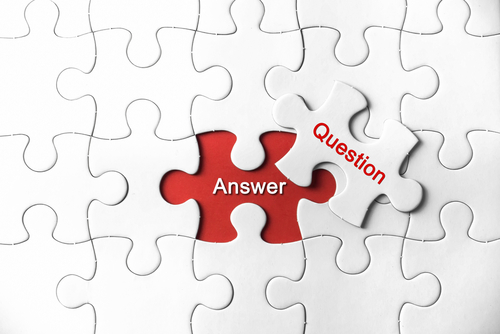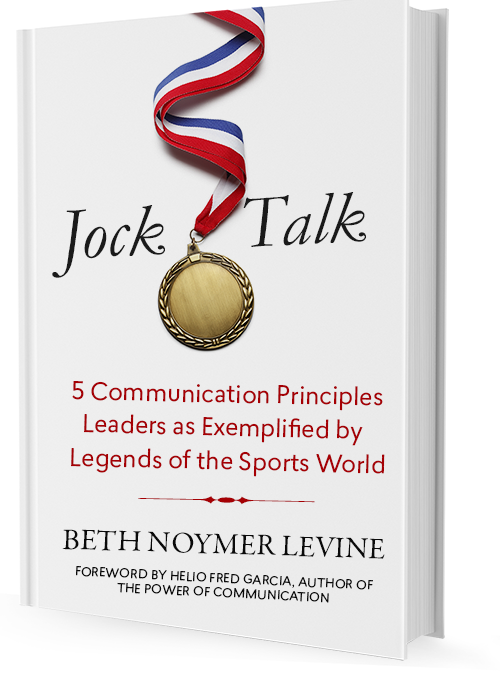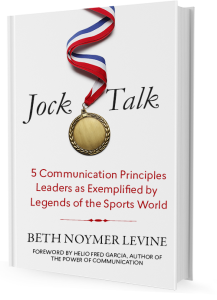
by Beth Levine | Oct 25, 2018 | preparing for a presentation, public speaking, quote
 There is considerable debate about attention spans and about the effects of the digital world and handheld devices. Interestingly enough, just a few decades ago, the debate focused on the effect that television was having on attention spans. Digital devices like smartphones and tablets are just the latest and greatest scapegoats. Whether they have or haven’t contributed to diminishing attention spans, it is certainly mind-boggling to realize that, with Twitter, full-bodied messages can be delivered in 140 characters or less.
There is considerable debate about attention spans and about the effects of the digital world and handheld devices. Interestingly enough, just a few decades ago, the debate focused on the effect that television was having on attention spans. Digital devices like smartphones and tablets are just the latest and greatest scapegoats. Whether they have or haven’t contributed to diminishing attention spans, it is certainly mind-boggling to realize that, with Twitter, full-bodied messages can be delivered in 140 characters or less.
The change in attention spans is often discussed in negative terms, as a deterioration in our ability to focus. But I think we have to ask ourselves, is this really a bad thing? I prefer to look at the phenomenon as a market disruption or correction that is forcing communications to adopt the often-touted corporate principles of leanness and efficiency. As companies try to increase engagement and productivity, improving communication—by cutting out waste—could be quite effective. Being brief and to the point may require a little extra effort, but it can accomplish a lot and save precious time.
Many studies have now measured adult attention spans—where they are and how they’ve changed over the years. There are reports suggesting that in just the last decade, the average adult attention span has shrunk from highs of twelve to eighteen minutes and to lows of three to five minutes, depending on the study’s focus and the environments of the participants. Some studies look at how long people can concentrate on a task; others look at their attentiveness while listening. Yet how long people can pay attention to a speaker depends on tremendous variables that can make it hard to measure: the comfort and conduciveness of the environment, the speaker’s voice quality and modulation, the actual content, whether there are effective visuals or good stories, what the objective is for the audience, and whether they understand that objective. The ability to focus is, after all, crucial to the achievement of an objective, so audience motivation levels can vary as well.
Holding the attention of an adult audience requires a tremendous amount of multitasking and careful advance planning. In other words, brevity—or perhaps we should call it efficiency and expediency—in communication takes discipline and planning. As the speaker, it’s up to you to do the hard work of organizing your thoughts and packaging your content for your audience, because their attention spans are what they are and they’re not growing!
(Excerpted in part from Jock Talk: 5 Communication Principles as Exemplified by Legends of the Sports World)

by Beth Levine | Oct 17, 2018 | preparing for a presentation, public speaking
 Q: Are you a presenter who likes to encourage audience engagement and discussion?
Q: Are you a presenter who likes to encourage audience engagement and discussion?
Q: Are you a presenter who worries about radio silence from your audience during Q&A?
Q: Are you a presenter who wants to know more about your audience when you’re in front of them?
If you answered yes to any or all of the above, then you are someone who needs to know your questions.
Presentation prep does not end with a well-organized deck, replete with clear points, well-contained information, some stories, and a call to action. Presentation prep also needs to include the questions you plan to ask your audience.
Here are 3 prompts for the types of questions you might need to prepare and know ahead of time:
Questions that encourage engagement, discussion and understanding.
Let’s say you are someone who does well with lots of audience engagement and active discussion during a presentation. How do you encourage that? Or let’s say you are someone who likes to stimulate discussion in order to get a feel for whether your audience is on the same page as you and understands/appreciates your points. How do you find out if they’re with you?
You’ll want to prepare ahead and develop some specific leading questions that get you to the discussion you want to conduct or to the understanding you’re hoping to achieve. Questions like “What do you think so far?” or “Tell me what you think the most compelling aspect of this proposal is so far?” or “Let me know who agrees or disagrees so far and why.”
Questions to prompt your audience during Q&A.
It’s time for Q&A. You announce to your audience, “We have about 10 minutes, I’m happy to take any questions you may have.” Radio silence. No hands, no voices. Now what do you do? Again, you will want to have prepared some questions ahead of time that might stimulate the kind of discussion you want to have.
This is where you might ask them, “Can someone tell me what their number one takeaway is from today’s talk?” (peer teachback!) or “Where are the holes in my proposal, what did I leave out?” (challenge me!) or “Is someone willing to volunteer and share their impression?” (potential exposure!)
Questions to help you get to know your audience.
Depending on the size of your audience, you can solicit input from them, either in the beginning or during your presentation, to get to know them better. You might know generally what they’re interested in, but there’s nothing like asking them on the spot, that day, what’s on their minds. Questions that elicit their personal interest or bias regarding your topic can be very helpful as you work through your material. The answers could well give you insights into things you should avoid or include.
Think about stating your topic and then asking the audience what it is about your topic that they would want you to be sure to cover. Or ask for a show of hands when you want to find out what proportion of the audience has had an experience you’re about to describe. Ask them to share their experience. Find out, on a more granular level, what they’re interested in regarding your topic.
It’s all risky. Knowing, not knowing. Asking, not asking. Put yourself out there, ask with sincerity and curiosity and then adapt/adjust accordingly. Your audience can be a presentation helper, not just a receptacle for your words.

by Beth Levine | Oct 2, 2018 | preparing for a presentation, public speaking
 Q: What’s up with long, tedious presentations?
Q: What’s up with long, tedious presentations?
A: Time’s up.
Be brief, people! Break away from the pack mentality of proving your worth with your word count and slide count, or the arbitrary convention of filling your allotted time. Leave your audiences wanting more!
No matter how much time you think you have, plan on less (I promise, no one will complain if you finish talking earlier than expected). When conference planners invite you to speak for an hour, don’t. They only do that because it’s easier to book eight speakers per day than 16. No audience can really hang on for an hour; in fact, we know that adults can only digest material for a maximum of 20 minutes. Even when the last 15 minutes are reserved for Q&A, those first 45 minutes are likely too long unless you are able to break up the time with Q&A throughout, videos, group discussions and exercises, or appealing/entertaining visuals.
Adult audiences also need a stimulus change to stay engaged. Without it, they zone out periodically. I recently led a group of female executives who met monthly to practice making different types of speeches and presentations, and they all admitted to zoning out at least once during each other’s talks, which, by the way, were capped at three minutes!
Audience attention is sharpest at the beginning and the end of a speech or presentation, so that makes openings and closings vitally important. In the middle, where the meat is, is where the audience zones out. The point is that it matters how you organize your material and guide your audience. And if it’s absolutely necessary to fill an hour-long time slot, be aware of about a 15-20 minute attention span limit. Break up the talk into sections, and keep each of those as brief as possible. Switch things up at 15-20 minute intervals as a way to restart the attention span clock: turn on the PowerPoint, turn it off, solicit Q&A at the end of each section, draw or write on a white board, show a video. Choreograph the time with your audience’s experience and attention spans in mind.
It’s all about them, so make some judgment calls about what will best suit your audience, including the length and structure of your presentation.
(Excerpted in part from Jock Talk: 5 Communication Principles as Exemplified by Legends of the Sports World)
by Beth Levine | Sep 18, 2018 | Just Mouthing Off, public speaking
You’re not special. But don’t worry, I’m not special either.
Why do I say that? Because no matter what we do – how well we prepare or how engaging we are – we will lose our audience at one point or another during our presentation. It’s just not realistic to assume that everyone in the audience will be able to hang on for every word, every slide, or even every key point of a talk.
 People check out. It’s a fact. And it’s not (necessarily) your fault. It’s the ebb and flow of the human attention span and the unavoidable distractions – both tangible (messages coming through on devices) and intangible (daydreaming, exhaustion, or randomly occurring thoughts) – that are to blame.
People check out. It’s a fact. And it’s not (necessarily) your fault. It’s the ebb and flow of the human attention span and the unavoidable distractions – both tangible (messages coming through on devices) and intangible (daydreaming, exhaustion, or randomly occurring thoughts) – that are to blame.
No matter how diligently you prepare or rehearse, it’s still not an insurance policy against audience members checking out during your presentation. As much as you plan a presentation for audiences to hear your every word, they won’t. They’ll drift off. You’re not special, and neither am I. We have to work to grab and hold their attention and we have to plan for their lapses in attention.
So, how do we do that? Below are 3 ways you can provide a helping hand to your audience members:
Be Brief
Unless your topic or audience call for a deep, thorough download, be as succinct as possible. Every time. In fact, I would advise you to think about whether people are in the room on their own free will (in which case you have some leeway) or out of obligation (in which case brevity is urgent). This will help you gauge how much time and detail you will use, and it will be better suited to your audience.
Know, don’t guess, how long your presentation is. Rehearse a few times and time yourself. This way, you’ll know if you need to make adjustments or cut some material. You’ll also be able to let your audience know what they’re in for from the start. If you can tell them how long your talk is, they’ll be better able to calibrate their own attention span – e.g. “oh, this is only 20 minutes? I can hang on for 20 minutes.”
Use Signposts
On your slides and as you are speaking, give your audience cues and clues as to where you are in your talk. Trust me, they need this. (You’ve needed it, haven’t you? Think about your own experiences sitting through presentations … I’m guessing there are at least a few instances when you would have liked some cues or clues!) Guide them.
Visually, you can help your audience by including a progress bar in your slides, so that your audience can track where you are in your presentation. Or, if you have a small deck, you can include a countdown – e.g. 1 of 12, 2 of 12, etc. Or, if you have, let’s say, three main sections that you told your audience you would be covering, you can let them know where you are by including the name or keyword for each section in the lower right corner. In fact, all of these visual cues are best situated in the lower right corner of your slides.
Verbally, you can keep your audience tracking by narrating where you are and what you’re doing. Some examples of this include: telling the audience how long your talk will be, letting them know when you’re digressing to share a relevant story, letting them know when the story is over and you’re returning to your point, alerting them whenever you’re transitioning from one section of your presentation to another, and (everyone’s favorite) announcing the conclusion.
Be Dramatic
Use the pregnant pause. Stop and stand in the middle of the stage. Animate or “act out” what you’re talking about. For example, if you say the number 4, hold up 4 fingers. Or if you say, “fast forward a few years,” roll your forearms, one over the other, to show motion. Or if you’re talking about something meaningful, touch your heart.
If “the show” moves along and there’s more to look at than just your visuals, people might hang in there with you better and longer. Before you resist and say I can’t do that, let me offer this: What might feel like theatrics to you will merely look like good delivery energy to your audience.
In a perfect world, speakers would be efficient enough with their words that audiences would be able to hang on every one of them. But as we all know, that’s not the case. Even the most efficient speakers and the best audiences have lapses – no matter how good or how special the speakers are! The best you can do to hold onto your audience’s attention is to take them by the hand and guide them through your presentation. The rest is up to them.
by Beth Levine | Sep 4, 2018 | preparing for a presentation, public speaking
Last week, I was strolling the streets of Manhattan, killing time, when I walked by one of those nice stationery stores that sells not only paper, but beautiful cards, planners, and novelty items. I was thinking it was almost time for a 2019 calendar (yes, I still love a paper calendar!) and so I went in to browse.
 The first thing I spotted, on a display table that sat front-and-center, was a stack of small black boxes that said “Stop Talking” on the front. I couldn’t imagine what they were. Luckily, one of the boxes was already opened and so I got a look – inside were 50 or so ivory-colored cards that also said “Stop Talking” in black ink.
The first thing I spotted, on a display table that sat front-and-center, was a stack of small black boxes that said “Stop Talking” on the front. I couldn’t imagine what they were. Luckily, one of the boxes was already opened and so I got a look – inside were 50 or so ivory-colored cards that also said “Stop Talking” in black ink.
This is when my head-scratching began. So, for $9.95, I could have 50 of these little cards to hand out to over-talkers? When would I use these and how? Were these for chatty friends who, over coffee, start answering ‘what’s new?’ and then never come up for air? Were these for those meeting participants who talk for the sake of hearing themselves talk? Were these meant to be surreptitiously slipped onto the desks of neighboring cubicle dwellers who talk too much and too loudly?
My imagination ran wild. And then it stopped. I decided these little “Stop Talking” cards were for any and all of the above … and probably more. We live in a world of talkers, and clearly someone invented this novelty item on the theory that there would be plenty of consumers who would find these “calling cards” amusing and/or useful.
What does this say, then, about how we’re doing with two-way communication? Can you imagine a similar offering of 50 “Stop Listening” cards? I can’t. The problem is that the talking side of the communication see-saw is always over-weighted, and the listening side is under-weighted. Anecdotally, I know this to be the case because I often get asked if I can coach people to be more succinct and to listen better, sometimes teams of people. It’s quite common that people talk more than others can bear, and it’s universally challenging among individuals and groups alike.
For those who are nodding in agreement while reading so far, here are 5 quick-tip reminders about listening versus talking that you can use as refreshers for yourself or that you can share with your favorite over-talker(s):
- Think about your audience: Is this someone/a group you should be listening to more (boss or client) or talking to more? Is there really anyone you should be talking to more than you should be listening to? Balance your talking with listening.
- Train your brain to go into neutral and simply be present and listen. Literally, stop your brain for a minute. Focus. Hear. Process. Listen, stop talking.
- Listen for the purpose of empathizing and relating rather than listening for the purpose of formulating a response. You might not need to formulate a unique response at all, you might just need to reiterate/reinforce/validate what you heard. Slow down. Listen, stop talking.
- Listen for the purpose of learning, gaining insight or gathering intelligence. Listening can produce some very valuable material you can use to your advantage later on. If you’re talking, you’re not learning. Listen, stop talking.
- Listen intently, actively and sincerely. Be that person. So that when you want to talk and be influential, you will surely be given your due. Listen for real, so you when you need to talk, others will listen.
Those “Stop Talking” cards stopped me dead in my tracks and got me thinking. I’m not sure I’d have the gumption to hand them out, but I considered it. More than that, they prompted me to think about communication as a two-way transaction that breaks down when one way gets more traction and time than the other. The fix is simple, though: stop talking so much, start listening more!

by Beth Levine | Aug 13, 2018 | preparing for a presentation, public speaking
It doesn’t take much to be a good leader-communicator. Perfection may be elusive, but being good enough to earn the admiration of your team are well within reach. Adherence to a few core principles takes care of most situations.
 In my book Jock Talk: 5 Communication Principles for Leaders as Exemplified by Legends of the Sports World, I walk readers through the philosophy behind, and application of, these 5 principles: Audience-centricity, Transparency, Graciousness, Brevity, and Preparedness.
In my book Jock Talk: 5 Communication Principles for Leaders as Exemplified by Legends of the Sports World, I walk readers through the philosophy behind, and application of, these 5 principles: Audience-centricity, Transparency, Graciousness, Brevity, and Preparedness.
Taken together, they send two really important messages about you to your audience: 1) that you care about and respect them, and 2) that you’re real and therefore credible and trustworthy.
Audience-centricity is probably the most fundamental of the five principles. Simply put, audience-centricity is making the audience’s interests and experience a top priority in the planning and execution of a talk. Too many speakers prepare and deliver what is important and interesting to themselves without enough careful consideration of their listeners. Being audience-centric is a mindset shift that encourages the speaker to prepare and deliver content in a way that will matter to and resonate with the audience.
Transparency is exactly what you think it is; it’s about being open and direct—yes, and honest, too. Transparency is critical. It contributes to the levels of sincerity and trust that are accorded to you by your audience.
Graciousness is the art, skill, and willingness to be kindhearted, fair, and polite. As motivators and influencers, love and peace work far better than hate and war. Speaking in positives rather than negatives leaves lasting, favorable impressions.
Brevity is a crowd-pleaser and needs no further introduction.
Preparedness speaks for itself as well, especially because the unprepared speaker is the one who is most likely to be longwinded, not to mention unfocused. While the mere thought of preparation might bring on feelings of dread or even impossibility, there are ways to prepare that take only seconds but that can greatly enhance a speaker’s effectiveness.
As summer winds down and everyone settles in for the homestretch toward year-end, I would encourage you to pick one of these principles as your personal pet project for the fall. Which one of these 5 do you feel like you need to improve on the most? Or which one of these 5 would have the most impact on your business if you strengthened it? Pick one and go for it!

 There is considerable debate about attention spans and about the effects of the digital world and handheld devices. Interestingly enough, just a few decades ago, the debate focused on the effect that television was having on attention spans. Digital devices like smartphones and tablets are just the latest and greatest scapegoats. Whether they have or haven’t contributed to diminishing attention spans, it is certainly mind-boggling to realize that, with Twitter, full-bodied messages can be delivered in 140 characters or less.
There is considerable debate about attention spans and about the effects of the digital world and handheld devices. Interestingly enough, just a few decades ago, the debate focused on the effect that television was having on attention spans. Digital devices like smartphones and tablets are just the latest and greatest scapegoats. Whether they have or haven’t contributed to diminishing attention spans, it is certainly mind-boggling to realize that, with Twitter, full-bodied messages can be delivered in 140 characters or less.

 Q: Are you a presenter who likes to encourage audience engagement and discussion?
Q: Are you a presenter who likes to encourage audience engagement and discussion?
 Q: What’s up with long, tedious presentations?
Q: What’s up with long, tedious presentations? People check out. It’s a fact. And it’s not (necessarily) your fault. It’s the ebb and flow of the human attention span and the unavoidable distractions – both tangible (messages coming through on devices) and intangible (daydreaming, exhaustion, or randomly occurring thoughts) – that are to blame.
People check out. It’s a fact. And it’s not (necessarily) your fault. It’s the ebb and flow of the human attention span and the unavoidable distractions – both tangible (messages coming through on devices) and intangible (daydreaming, exhaustion, or randomly occurring thoughts) – that are to blame. The first thing I spotted, on a display table that sat front-and-center, was a stack of small black boxes that said “Stop Talking” on the front. I couldn’t imagine what they were. Luckily, one of the boxes was already opened and so I got a look – inside were 50 or so ivory-colored cards that also said “Stop Talking” in black ink.
The first thing I spotted, on a display table that sat front-and-center, was a stack of small black boxes that said “Stop Talking” on the front. I couldn’t imagine what they were. Luckily, one of the boxes was already opened and so I got a look – inside were 50 or so ivory-colored cards that also said “Stop Talking” in black ink.



